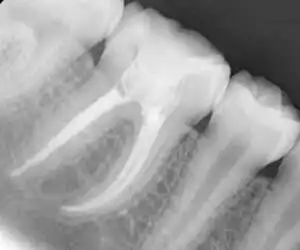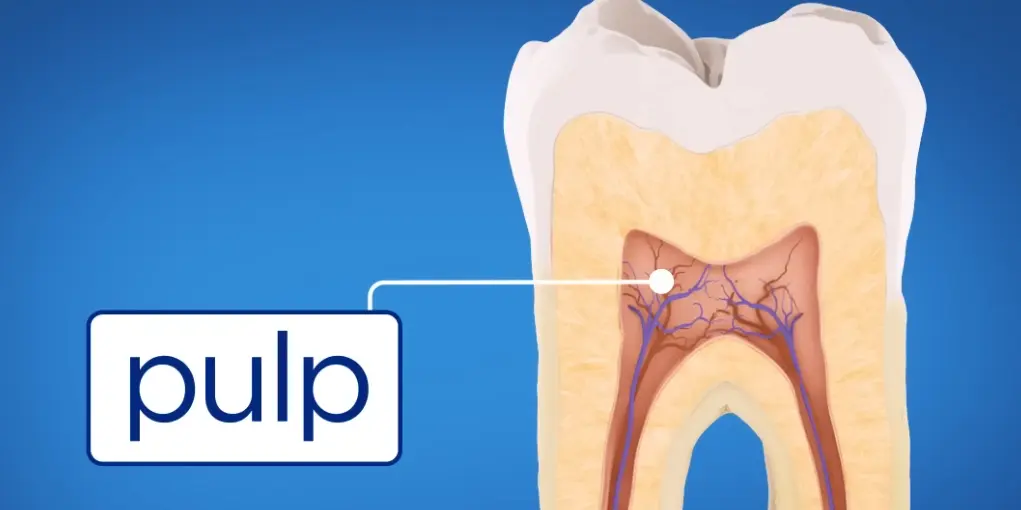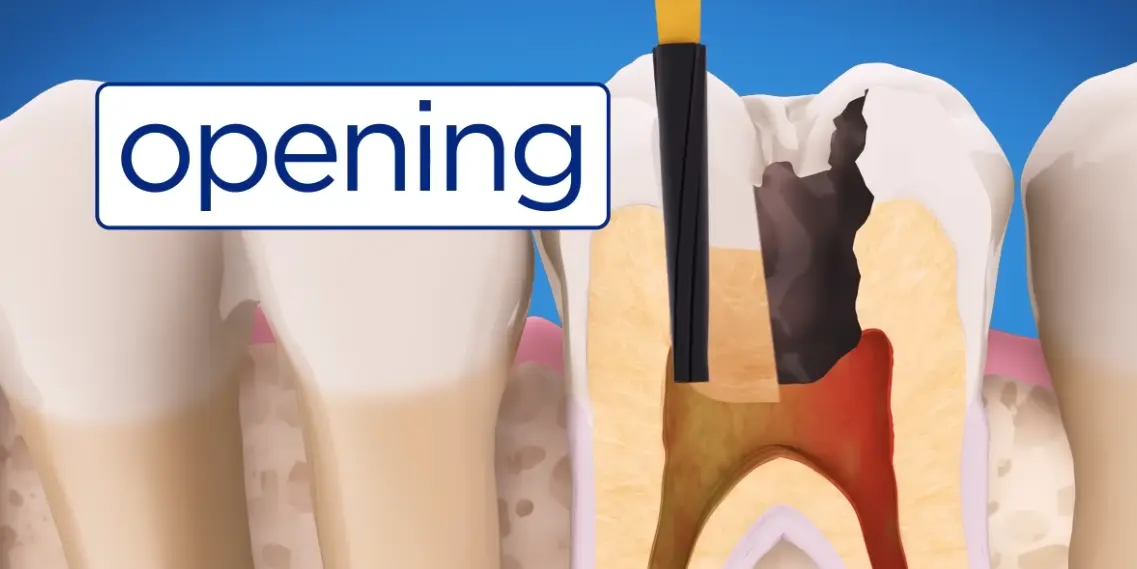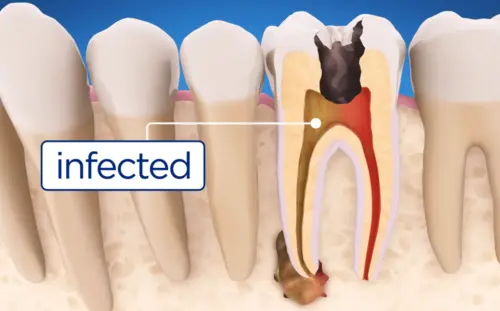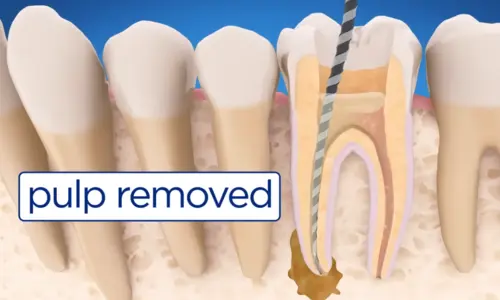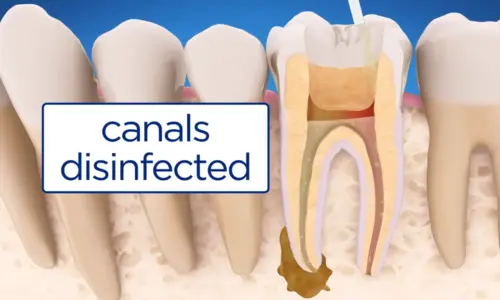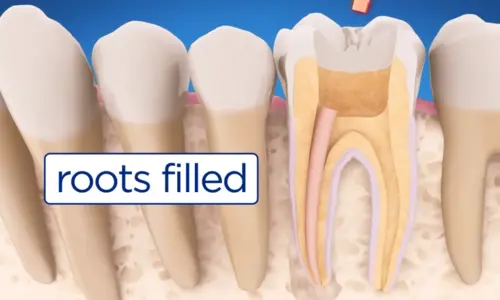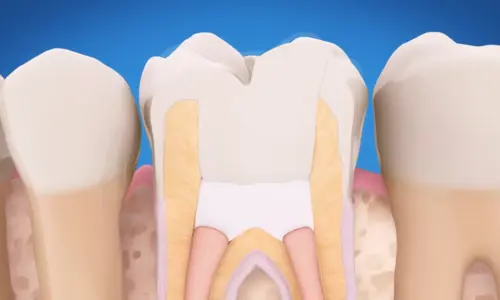Root Canal Treatment: For Your Aesthetic Smile!
Dr. Md. Mostafizur Rahman Khandakar, a leading dentist in Comilla, offers answers to frequently asked questions about root canal treatment. This informative guide explores the causes of tooth pulp damage, treatment options, aftercare practices, and more. Smile with confidence – learn how root canals can save your natural tooth!
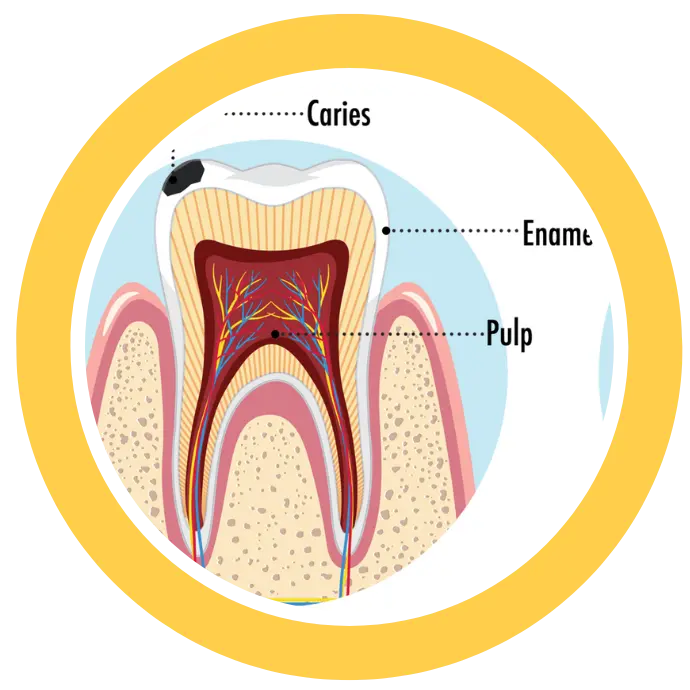
What is Root Canal Treatment?
A root canal, also known as endodontic treatment, is a dental procedure designed to address infection or inflammation within the core of your tooth, called the pulp. This pulp is a soft tissue containing nerves, blood vessels, and connective tissues that run from the crown (top) of the tooth down to the tips of the roots.
When Root Canal Treatment is Necessary?
The need for a root canal arises when the pulp becomes infected or inflamed. This can happen due to several reasons, including:
- Deep decay or cavities that reach the pulp
- Repeated dental procedures on the same tooth
- Cracks, chips, or fractures in the tooth
- Trauma to the tooth
If left untreated, this infection can spread and cause an abscess (pus-filled pocket) or even lead to tooth loss.
Importance of Root Canal Treatment: Saving Your Smile and Your Health
Root canal treatment plays a crucial role in preserving your oral health and overall well-being. Here’s why it’s important:
Saves Your Tooth
Unlike an extraction, a root canal removes the infected pulp while keeping the rest of the tooth structure intact. This allows you to maintain natural chewing function and a complete smile.
Eliminates Pain and Discomfort
An infected tooth can cause significant pain and sensitivity. Root canal treatment effectively removes the source of this discomfort, allowing you to eat, speak, and smile without pain.
Prevents Infection Spread
Left untreated, an infected tooth can lead to serious complications like abscesses that spread to surrounding tissues and bones. Root canal treatment eliminates bacteria and prevents this spread.
Promotes Long-Term Oral Health
Saving a natural tooth is crucial for maintaining a healthy mouth. Root canal treatment allows other teeth to function normally and prevents jawbone deterioration that can occur after extraction.

Cost-Effective Option
While the upfront cost of a root canal may seem high, it’s often significantly cheaper than the cost of an extraction and subsequent procedures like bridges or implants needed to replace a missing tooth. Tooth root canal treatment is a valuable investment in your oral health and overall well-being. It promotes pain-free living, prevents infection spread, and protects your natural tooth structure for a healthy, confident smile.
Signs and Symptoms of Needing a Root Canal
Early detection and treatment can save your tooth from extraction and prevent further complications. Here’s what to watch out for:
Persistent Pain
This is the most common symptom of an infected tooth. The pain can be throbbing, sharp, or dull, and may worsen when you chew, bite down, or apply pressure to the tooth. Unlike typical toothaches that come and go, root canal of teeth pain tends to linger or progressively worsen.
Sensitivity to Hot and Cold
Does your tooth react intensely to hot or cold beverages or food, even after the source of temperature is removed? This lingering sensitivity can be a sign of nerve damage or inflammation within the tooth, potentially signaling the need for a root canal.
Swollen or Tender Gums
The infection under tooth after root canal pulp can irritate the surrounding gum tissue, causing swelling and tenderness. You might experience discomfort when touching the gums near the affected tooth.
Pimples on Gums (Fistula)
In severe cases, an infected tooth may lead to a pimple-like bump on the gums, called a fistula. This bump often signifies drainage of pus from the infection and requires prompt attention.
Discoloration of the Tooth
A tooth deprived of blood flow due to an infection may start to darken or become discolored. This change in color can be a sign of pulp necrosis (death) and necessitates a root canal.
Loose Tooth
The infection can weaken the bone supporting your tooth, causing it to feel loose or unstable. This is a serious symptom and requires immediate dental attention.
If you experience any of these signs or suspect you might have an infected tooth, don’t hesitate to schedule an appointment with your dentist. Early diagnosis and treatment with a root canal can save your tooth and prevent further complications.
Step-by-Step Guide to Root Canal Treatment: Saving Your Tooth Through Precision Care
A root canal treatment is complex, but it’s a routine procedure designed to save your tooth from infection. Here’s a breakdown of the steps involved, ensuring you know what to expect during your visit:
1. Pre-Treatment Evaluation and Diagnosis:
- X-rays and Tests: Your dentist or endodontist will likely start with X-rays to visualize the tooth and surrounding bone. Additional tests like gentle tapping, sensitivity checks using cold or hot instruments, and electric pulp testing (EPT) may be used to assess the pulp’s health.
- Local Anesthesia: Comfort is a priority. You’ll receive local anesthesia to numb the area around the tooth, ensuring a pain-free procedure.
2. Accessing the Tooth Pulp:
- Isolation with Dental Dam: A thin sheet of rubber called a “dental dam” isolates the tooth, keeping the treatment area clean and dry throughout the procedure.
- Creating an Access Hole: A tiny opening is carefully drilled through the tooth’s crown to access the infected pulp chamber and root canals.
3. Removing Infected Pulp:
- Precise Cleaning: Using specialized instruments, the dentist or endodontist meticulously removes the inflamed pulp, bacteria, and any decayed tissue within the tooth and root canals.
4. Cleaning and Disinfection:
- Thorough Disinfection: Once the pulp is removed, the canals are thoroughly cleaned and disinfected to eliminate any remaining bacteria and prevent future infection.
5. Filling the Canals:
- Gutta-Percha Filling: The cleaned canals are filled with a biocompatible material like gutta-percha, a rubber-like substance, to seal the space and prevent reinfection.
6. Temporary Filling and Healing:
- Temporary Seal: A temporary filling is placed on the access hole to protect the tooth while it heals.
- Natural Healing: In most cases, the inflamed tissue surrounding the tooth will heal naturally after the procedure.
7. Permanent Restoration (Optional):
- Crown Placement: Depending on the tooth’s condition, a permanent crown may be recommended to restore full functionality and protect the treated tooth from future damage. This crown placement typically occurs in a separate visit after the tooth heals.
This is a general overview. The specific steps involved in your root canal treatment may vary depending on the complexity of your case. Your dentist or endodontist will discuss the details of your treatment plan and answer any questions you may have.
Root Canal Treatment and Crown Restoration: Completing the Restoration Process
Following a successful root canal treatment, a crown is often recommended to restore the tooth’s full functionality and aesthetics. Here’s a breakdown of why crowns are important, the different types available, and what to expect after crown placement:
Importance of Crown Restoration After Root Canal:
- Strength and Protection: During a root canal, the pulp and nerves are removed, making the tooth more brittle. A crown reinforces the tooth structure, protecting it from fracture and future damage.
- Functionality: A crown restores the tooth’s original shape and size, ensuring proper chewing function and preventing bite problems.
- Sealing the Tooth: A well-fitting crown creates a tight seal over the treated tooth, preventing bacteria from re-entering the canals and causing re-infection.
- Improved Aesthetics: Crowns can be crafted to match the color and appearance of surrounding teeth, restoring a natural and attractive smile.
Types of Crowns Used:
There are various crown materials available, each with its advantages and disadvantages. Here are some common options:
- Porcelain Crowns: These popular crowns offer a natural-looking aesthetic and good durability.
- Zirconia Crowns: Zirconia crowns are strong, biocompatible, and offer a very natural appearance. They may be a good choice for patients with metal allergies.
- Metal Crowns: While less common today due to aesthetic concerns, metal crowns offer excellent durability and are a good option for back teeth that experience heavy chewing forces.
Timeframe for Getting a Crown After Root Canal:
In most cases, a temporary crown will be placed after your root canal procedure to protect the tooth while a permanent crown is custom-made in a dental lab. The timeframe for receiving your permanent crown typically takes 1-2 weeks.
Sensitivity and Pain After Crown Placement:
Some minor sensitivity or discomfort around the treated tooth or gums is possible after crown placement. This usually subsides within a few days. Over-the-counter pain relievers can help manage any discomfort. If you experience severe or persistent pain, contact your dentist to rule out any complications.
Root Canal Treatment Cost in Bangladesh
Root canal treatment is a common dental procedure aimed at treating infected or damaged tooth pulp, thereby saving the tooth from extraction. In Bangladesh, the cost of root canal treatment can vary significantly based on various factors.
Average root canal cost in Bangladesh
The average cost of a root canal procedure in Bangladesh ranges from BDT 5,000৳ to BDT 20,000৳, depending on several variables. These may include the location of the dental clinic, the experience and expertise of the dentist, the complexity of the case, and the materials utilized during the procedure.
Root canal cost in Dhaka
As the capital city of Bangladesh, Dhaka hosts numerous dental clinics offering root canal treatments. The cost of root canal treatment in Dhaka typically ranges from BDT 5,000৳ to BDT 15,000৳ for a single root canal. However, if the tooth has multiple canals or requires additional procedures such as X-rays, dental fillings, or crowns, the overall cost may increase accordingly.
Estimated Root Canal Cost Ranges in Bangladesh (BDT)
Here are the Root Canal Procedures offered at Mostafizur’s Dental:
- Simple Root Canal Treatment
- Root Canal Treatment of a Molar Tooth (more complex root structure)
- Re-treatment of a Failed Root Canal
- Apicoectomy (Surgical Root Canal Treatment)
To get an accurate estimate for your specific situation, it’s best to contact Mostafizur’s Dental directly. They assess your needs and provide you with a personalized cost quote.
What People Asked About Root Canal
Don’t suffer from tooth pain! Root canals can save your smile. Dr. Md. Mostafizur Rahman, BDS DU, Dental & Oral Surgeon, offers gentle root canal treatment. Schedule a consultation today!
How Long After Root Canal to Get Crown?
There isn’t a one-size-fits-all answer. Ideally, get a crown within 30 days of your root canal. This minimizes the risk of infection or damage to the weakened tooth. However, your dentist will consider factors like swelling and healing before recommending the crown placement time.
Can I Drive After a Root Canal?
Usually, yes. Anesthesia used during the procedure might wear off by the time you leave the dentist. But always check with your dentist about any specific post-procedure instructions they may have before driving.
Do I Need a Root Canal?
This depends on the severity of the damage to your tooth’s pulp (the inner layer containing nerves and blood vessels). Signs that might indicate a root canal is needed include persistent toothache, sensitivity to hot or cold, swelling around the gum, or a visible pimple on the gum.
Do You Need a Crown After a Root Canal?
In most cases, yes. A root canal removes the pulp, leaving the tooth brittle and susceptible to breakage. A crown strengthens and protects the tooth.
Tooth Sore After Root Canal, What to Do?
Some soreness after a root canal is normal. Over-the-counter pain relievers and a cold compress can help manage discomfort. If the pain is severe or persists for several days, contact your dentist.
Does Root Canal Treatment Hurt?
Anesthesia is used to numb the area during the procedure, minimizing discomfort. You might experience some tenderness afterward, but this is usually manageable with medication.

